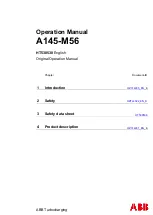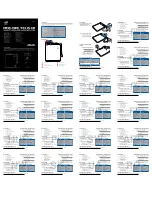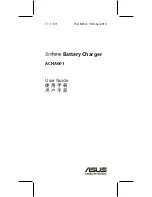
Instructions for use 739 948
Page 5/6
LEYBOLD DIDACTIC GMBH
.
Leyboldstrasse 1
.
D-50354 Hürth, Germany
.
Phone +49 2233 604-0
.
Fax +49 2233 604-222
.
e-mail: info@leybold-
didactic.de
by Leybold Didactic GmbH
Printed in the Federal Republic of Germany
Technical alterations reserved
The communication signals between the vehicle and charging
station can also be measured on the
automotive high voltage
trainer, 739 947
at the intended 4 mm measuring socket for CP
against the PE socket while charging.
4 mm measuring sockets at the front of the device:
Fig. 11 - Measuring sockets on the automotive high voltage trainer, 739
947
Note
Even while charging, the PE socket of the charging socket is not
connected to the PE sockets of the
automotive high voltage
trainer!
A “Status A” must follow after each change in resistance, other-
wise the new value is not loaded!
3. Fault switch
Fault
Description
#F1
Return information Interlock Interruption
#F2
Control Interlock Interruption
#F3
PP signal Interruption
#F4
CP signal Interruption
#F5
Fault during residual current circuit breaker
test
Table 2 - Meaning of the fault switches
Several faults may be activated at the same time!
4. Modbus communication
4.1
Description
You can access the device’s registers via Modbus/RTU via
system interface
4
. Modbus/RTU also allows you to make
additional configurations on the device, retrieve status in-
formation and control access to the charging process. The
device works as a Modbus slave; the address is perma-
nently set to
1
. The baud rate is
9600
for communication.
You can find a detailed description of the register assign-
ment at the time this document was created
4.2
Establishing a connection
You need an RS485 interface (e.g. LEYBOLD
735 315USB), optionally a 9-pin serial standard connec-
tion cable as well communication software (everything not
included in the scope of delivery). You use the cable to
connect interface
4
on the charging station to the RS485
interface of the computer. The 9-pin Sub-D socket is as-
signed as follows (without fixed 120
Ω
terminating resis-
tor!):
Pin 8
A
Pin 3
B
4.3
Programming
Install and start the software according to the manufactur-
er's specifications. An Internet search for «
Modbus TCP
RTU Master Software
» provides useful results for free soft-
ware or for demo versions of programs offered commer-
cially.
Regardless which software you are using, you will need
the following information for input:
Mode:
RTU
COM port:
look in the
Windows Device Manager
to see the port number under which the
interface you use was set up, here, for
example, number 7:
Fig. 12 - Determining the COM port number
Baud:
9600
Data bits:
8
Stop bits:
1
Parity:
none
Slave ID:
1
CP
PP
PE
























